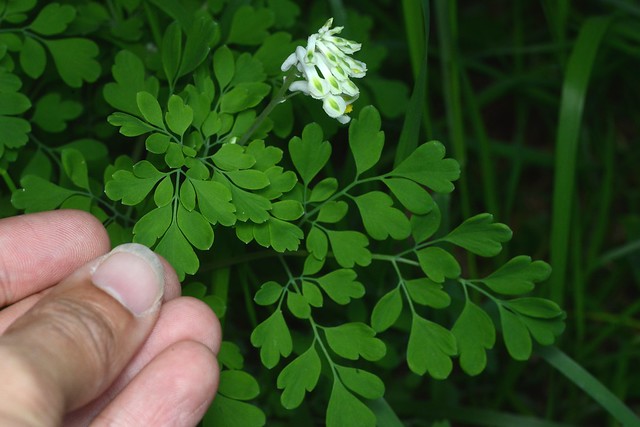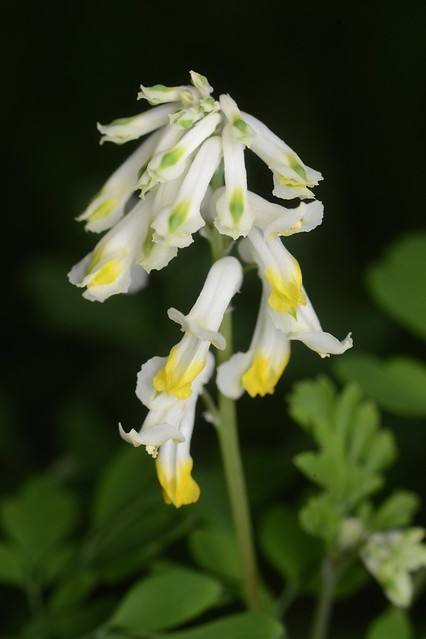RECENT ARTICLES
- CEBRA: An optimised and standardised sampling protocol for BioBlitz
- Stop it people, the plural of anecdote IS data!
- That's no pollinator, that's a flower visitor
- Add a scale to your macro photos
- What to photograph when counting the wild
- Imagine counting the wild on EVERY street in a city!
- My wild counting workflow
- A butterfly flew through
- Why iNaturalist observations without photos can be research grade
- Why you shouldn’t use a spreadsheet for data entry
- All articles ...
White corydalis: yet another incipient weed in Christchurch
Another day, another new weed in New Zealand.
written Oct 20, 2015 • by Jon Sullivan • Category: Wild Changes

Here’s another addition to my growing list of discoveries of garden plants beginning to establish in the wild in Christchurch: white corydalis, Pseudofumaria alba (previously known as Corydalis ochroleuca). Last month I found my first Chilean glory creeper in Christchurch. Last year it was the South African plant, Nemesia floribunda and the Peruvian lily, Alstroemeria aurea. These contribute to the ongoing creep of garden plants out into wild New Zealand. Some will become only minor components of wild plant communities. Others will become invasive weeds. Forecasting which will do what is still very difficult. It makes sense to stop anything with weedy tendencies while it’s easy to do so.


I found the Pseudofumaria alba wild and thriving along the side of the stream that runs along the eastern boundary of St. Albans School (my 7-year old son and I were exploring while my wife was playing soccer on one of the adjacent fields). This is the first patch of this plant I’ve ever seen and it took me a while to figure out what it was. It was growing in partial shade spreading along the weedy bank above the narrow channelised stream.
I’ve since discovered on the NZ Virtual Herbarium that this species has previously been collected wild in Auckland, first in 2002, in Taranaki first in 2005, and somewhere in/near Christchurch in 2005 and 2006 (the Virtual Herbarium fudges all of its coordinates so I can’t tell exactly where they were). There are a couple of other older specimens in the Allan Herbarium but I can’t tell from the online information whether or not they were wild and from where they were collected.
Not much is known about this species. It is native to rocky woodlands of southern and eastern Europe (according to missouribotanicalgarden.org), and has naturalised (gone wild) in parts of western Europe (e.g., Sweden). Several garden sites emphasise its propensity to self-seed (like finegardening.com, davesgarden.com, and missouribotanicalgarden.org). User coriaceous on davesgarden.com writes that “It can sometimes self-sow excessively, but the seedlings aren’t difficult to control.”
The fact sheet at davesgarden.com also notes that parts of the plant are poisonous if ingested. A related species, Corydalis caseana, was found to cause “serious losses of sheep” in parts of California where it had gone wild. Corydalis generally are poisonous to cats.
So, it’s a poisonous European woodland species that readily self-seeds and is now establishing in parts of New Zealand. It’s also in the poppy family (Papaveraceae) and we have no native plants in the poppy family. Pseudofumaria alba is therefore unlikely to become a host plant for many native insect herbivores and fungi and so play a limited role in food webs and have a competitive advantage over native plants.
Do we want another poisonous plant wild in our cities? If in doubt, pull it out!